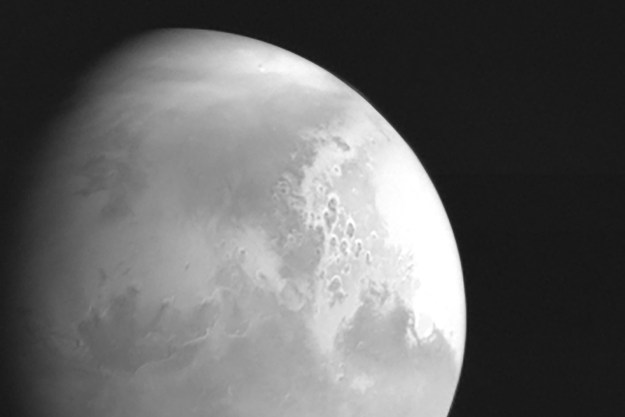
The Curiosity rover has captured a remarkable set of images showing two solar eclipses as seen from Mars. Using the solar filters on its Mast Camera (aka Mastcam) it was able to directly observe the Sun and to capture images of solar eclipses caused by two of Mars’s moons, Phobos and Deimos, passing in front of the Sun.

Phobos is a large moon which is 16 miles (26 kilometers) across at its widest point, while Deimos is smaller at 10 miles (16 kilometers) across. Neither event was technically a full eclipse as neither moon fully covered the Sun, but they can be seen passing in front of the Sun in a vivid way.
In addition to these two events, Curiosity also captured the above image of the shadow of Phobos spreading across the Martian surface.
The observations are important because the orbit of Mars’s moons had puzzled scientists for some time before rovers arrived on the planet. The first time that a rover imaged Deimos eclipsing the Sun, it turned out to be a full 25 miles (40 kilometers) away from its expected position.

“More observations over time help pin down the details of each orbit,” Mark Lemmon of Texas A&M University, College Station, a co-investigator with Curiosity’s Mastcam, said in a statement. “Those orbits change all the time in response to the gravitational pull of Mars, Jupiter, or even each Martian moon pulling on the other.”
Lemmon also emphasized the value of observing such events from Mars as a way for the public to relate to space exploration and other planets. “Eclipses, sunrises and sunsets and weather phenomena all make Mars real to people,” he said, “as a world both like and unlike what they see outside, not just a subject in a book.”
Editors' Recommendations
- Watch this solar eclipse captured from Mars
- Curiosity investigates how to keep Mars explorers safe from radiation
- NASA orbiter photo shows Curiosity rover on desolate Mars surface
- Check out Perseverance’s first panoramic image from Mars
- Watch Mars landing highlights, including first images from rover




